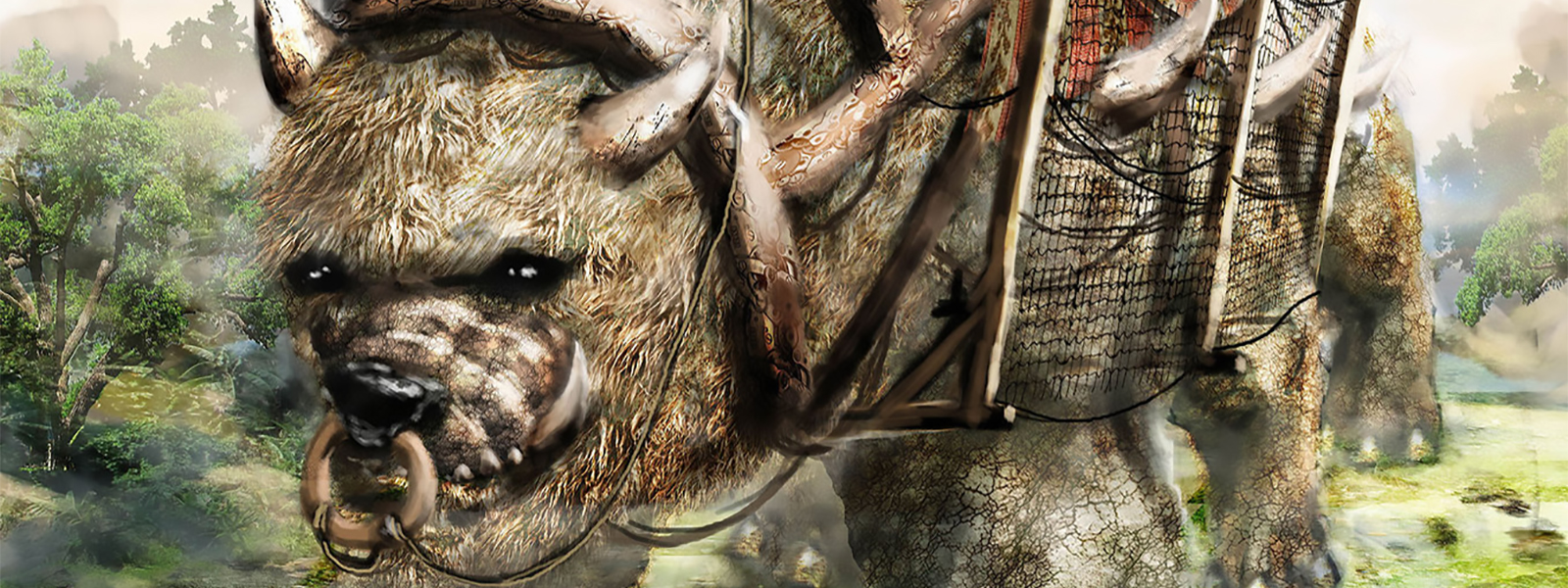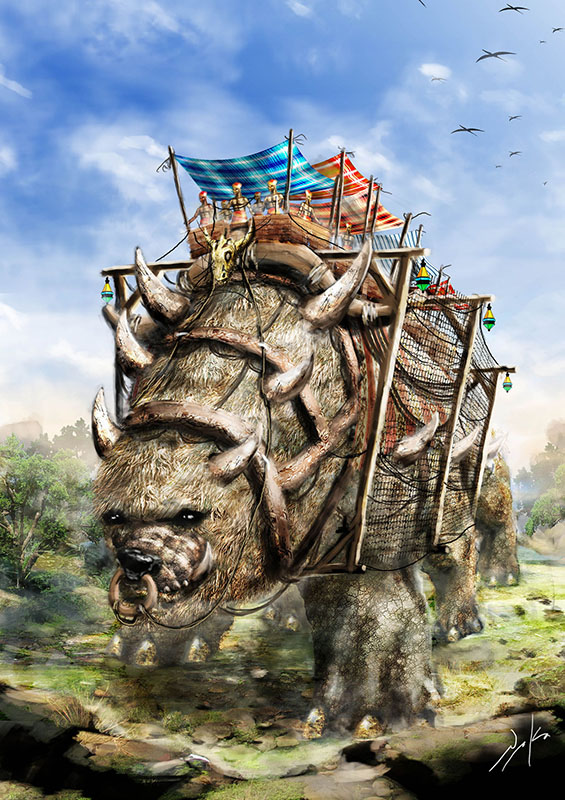Brontus Beast
Basic Information
Anatomy
Brontus beasts are extremely strongly built animals. Their main features are their six legs that allow them great stability and weight distribution for their size when traversing their natural habitats. They have thick hide covered in shaggy fur.
Brontus beast has a blunt snout filled with thick sturdy teeth, and grows a pair of relatively short horns from their skulls. Some members of this species are able to grow small ridge-like "horns" along their neck and spine bones too.
Their six legs are very thick and strong, with an unmatched bone and tendon structure, allowing Brontus' to be sure-footed almost anywhere. They have tall-ridged back that tappers like a mound down to a short, meaty, stubby tail that is covered in fine fur.
Ecology and Habitats
Differing kinds of Brontus beasts have been adapted and spread all over Asphodel, and used by many different cultures. However, their natural habitats are craggy treeless hills and mountains, prevalent with alpine grassy tundra plateaus or reachable mesas where they are able to graze and herd as needed while allowing enough room for a solitary existence.
Dietary Needs and Habits
Brontus beasts are herbivores that graze on grass for sustenance. Unlike many similar animals, they never eat grains, which complicates the provision of their feed in some regions. They especially enjoy tough, chewy types of grass, which they maul down and mash with their strong teeth.
Biological Cycle
Brontus beasts have two important cycles that happen every two seasons. During late fall, winter, and early spring, Brontus' participate in what is known as "herding", when all of those that live in the same area gather together to huddle for warmth and mutual protection while the difficult months pass. During this time most of the mating takes place.
Afterwards, during late spring, summer, and early fall, Brontus herds disperse into what is known as "solitariness", when males leave to their respective territories, while females each leave with their calves to raise and care for them. Though uncommon, it can happen that some mating occurs with calfless cows stumbling into a breeding bull's territory during the "solitariness" season.
Additional Information
Uses, Products & Exploitation
Though not very common, Brontus beasts are widely spread on Asphodel as beasts of burden. Some cultures even use them for transportation and war, by building elaborate howdahs upon their ridged back. However, those uses require the use of magic, because, by their very nature (and despite their size), Brontus beasts are fairly skittish when it comes to combat.
Nevertheless, Brontus' are prized for their strength, sure-footedness, calm and timid character, and enormous carrying capacity. They are most commonly employed in lugging of quarry and timber, especially when those materials need to be transported to or from various uplands.
Along with their obvious uses as transport animals and beasts of burden, Brontus' are used in other ways by some rural alpine cultures. Their meat is too tough for normal consumption, but their milk is very rich in nutrients, and also produces cheese and butter that are considered delicacy exports. Similarly, their skin, fur and hair are used in the creation of winter clothing, while their bones provide a rigid structure for many implements and even housing in such communities.
Perception and Sensory Capabilities
Brontus beasts are quite near-sighted, while their sense of hearing is excellent.
Lifespan
20-25 years
Average Height
4-5 meters
Average Weight
2-3 tons
Average Length
5-6 meters
Remove these ads. Join the Worldbuilders Guild











Comments